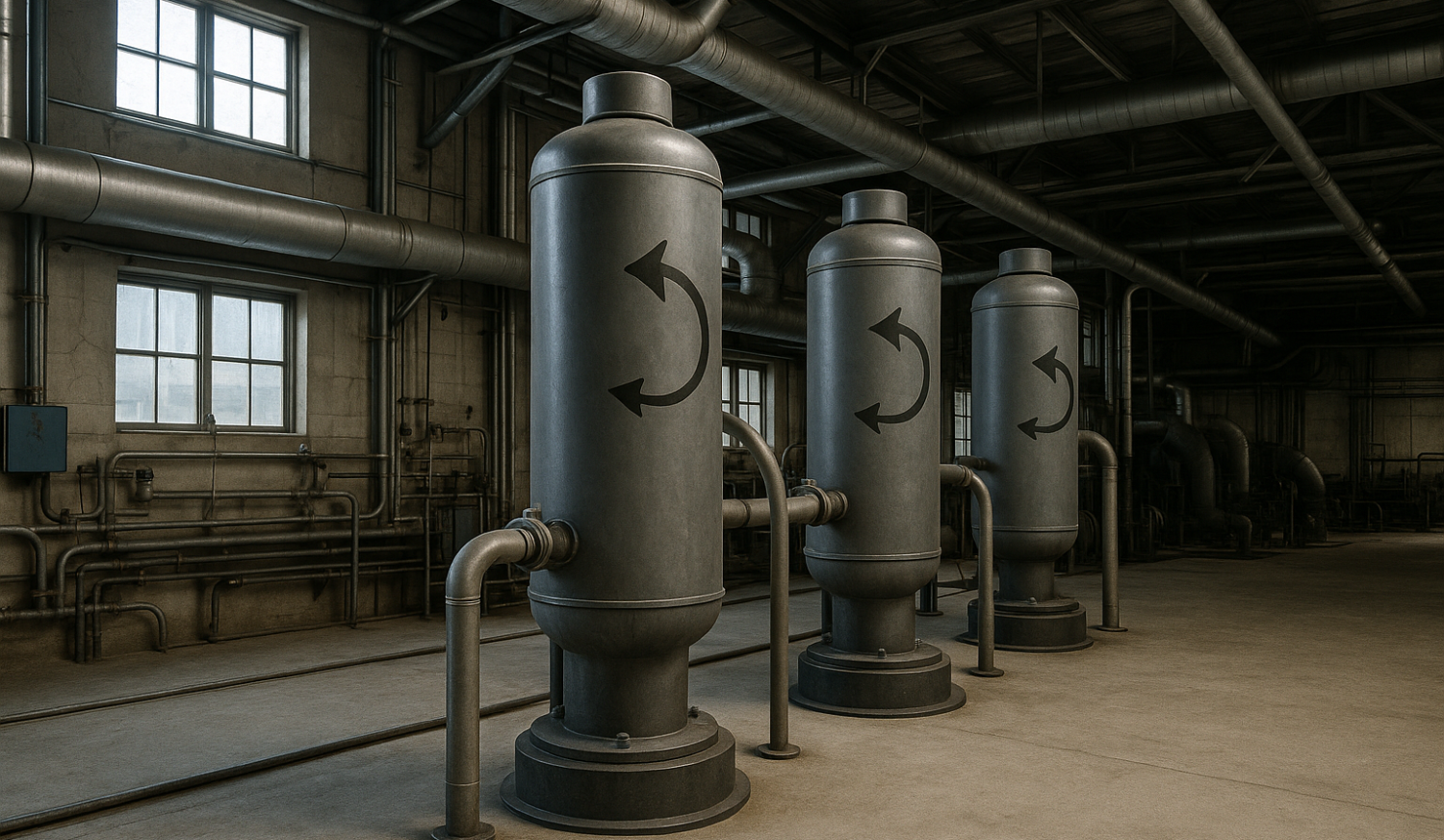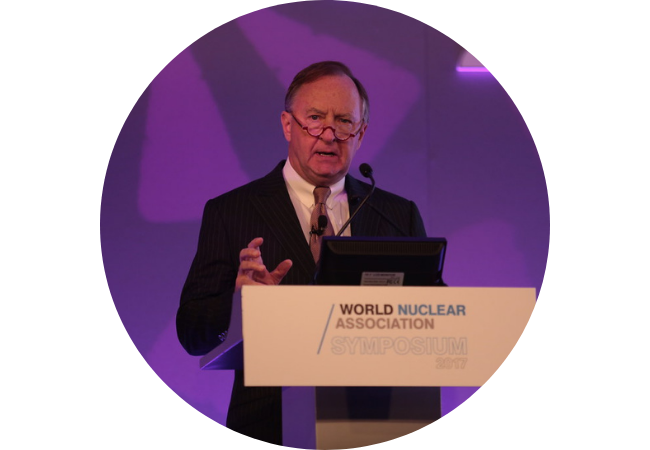Nuclear Fuel Cycle: Enrichment
Fletcher Newton is a leading expert in the uranium enrichment process, with extensive knowledge of the global enrichment market and the intricacies involved in increasing U235 concentrations for nuclear fuel production. With experience navigating complex long-term contracts and relationships with major enrichment facilities like Urenco, Orano, and Rosatom, Fletcher provides invaluable insights into securing cost-effective, timely enrichment services. His deep understanding of the technology, market dynamics, and production challenges makes him the ideal consultant for clients seeking to optimize their enrichment strategies and ensure reliable, high-quality uranium fuel for their nuclear operations.

Enrichment
The majority of the world’s commercial nuclear reactors are so-called “light water” reactors because they use ordinary water as the moderator to slow down the neutrons that sustain a chain reaction of U235. Ordinary water only slows down neutrons to a certain extent, so all light water reactors also require that the quantity of U235 in their nuclear fuel be increased above its natural level of 0.7%. The process to increase U235’s percentage above its natural level is known as “enrichment,” and enrichment facilities refer to their business as selling “enrichment services.” These “services” are bought, sold, and traded in units known as a “SWU” (see footnote 14, below).
Uranium is the heaviest naturally occurring element in the periodic table, and each uranium atom contains 92 protons in its nucleus. Protons are positively charged, and because positively charged particles repel each other, the nucleus of a uranium atom is naturally unstable and has a tendency to break apart, releasing different forms of “energy.”
In addition to the 92 protons that all uranium atoms contain, almost all uranium atoms (99.3% to be exact) also contain 146 neutrons. Neutrons have no electrical charge, but they do have approximately the same mass as protons. Uranium atoms with 92 protons and 146 neutrons are designated as U238 because they have an atomic “weight” of 238 (92 protons + 146 neutrons = 238). The remaining 0.7% of uranium atoms also all still contain 92 protons but contain only 143 neutrons instead of 146 and are referred to as U235 (92 protons + 143 neutrons = 235). An “isotope” of an element refers to atoms of that element that have nuclei with different numbers of neutrons but the same number of protons. In one of God’s little jokes on the world of physics, only the U235 isotope is “fissile,” meaning it will sustain a fission chain reaction. It is this chain reaction that generates consistent quantities of heat in a nuclear reactor, which is the basis for producing electricity.
Because all uranium atoms are chemically identical, it is impossible to separate U235 from U238 using chemical processes. The only way to separate these two uranium isotopes is physically, based on their tiny difference in mass. How much of a difference? Three neutrons worth. Not much, but just enough to allow physical separation. It is this process of physically separating U235 to increase its concentration above its natural level of 0.7% that is referred to as “enrichment,” and it is the most difficult and expensive of the four steps in making nuclear fuel. And just as with conversion services, enrichment services are bought, sold, and traded under spot and long-term contracts.
Enrichment contracts are generally signed many years in advance and for long periods of time, sometimes for as long as a decade or more. A utility will begin negotiating its enrichment contracts several years before they actually need to have the uranium enriched, and the enrichment facility will likewise demand that such contracts run for longer periods of time since this enables them to better plan their production schedule and hopefully offer a better price. Because these plants are so expensive to build, and the technology is so complicated to operate, enrichment plants are also generally built, owned, and operated by governments, not private companies. One important exception to this principle is the US publicly traded company Centrus, which was created by privatizing the US government’s enrichment facilities and is now trying to build a new enrichment plant in the United States.
There are currently only three primary producers of commercial enrichment services that sell outside their own country: (1) the European consortium known as Urenco, which is owned in three equal parts by Ultra-Centrifuge Nederland NV (owned by the Government of the Netherlands), Uranit GmbH (owned equally by German energy companies E. ON and RWE); Urenco operates plants in each of those countries, along with a plant in Hobbs, New Mexico. The four Urenco plants account for approximately 30% of total world enrichment capacity, and 34% of available commercial enrichment supply. (2) Orano, which operates a single enrichment plant in France that represents approximately 12% of total world enrichment capacity and 14% of available commercial enrichment supply; and (3) Rosatom, which has four operating enrichment plants in Russia, accounting for 43% of world enrichment capacity and 52% of available commercial enrichment supply. In 2023, US utilities purchased 24% of their total enrichment supplies from Russia.

Fletcher’s expertise in the uranium enrichment process is second to none. His in-depth understanding of the global market, combined with his ability to navigate complex contracts and supplier relationships, ensures clients receive the best possible enrichment services. Whether negotiating long-term agreements or optimizing enrichment strategies, Fletcher’s guidance is invaluable in securing reliable and cost-effective solutions for any nuclear operation. He is the go-to consultant for anyone seeking to maximize their efficiency and success in the nuclear fuel cycle.
Enrichment News & Insights
Secondary Supply and the Role of Uranium Re-Enrichment
July 30, 2025Secondary supply—uranium sourced outside of primary production—has long been bolstered by the re-enrichment of depleted uranium, particularly through contracts between Western enrichers and Russia. This process once added meaningful volume to the market.
Making OJ for EUP Supply and Demand
July 21, 2025Utilities don’t just buy uranium—they buy enriched uranium, a mix of raw material and processing. For years, enrichers used less uranium (a practice called “underfeeding”), creating extra supply. But as of mid-2025, they’re underfeeding less, meaning more uranium is being consumed and less is left over for the market.
Inquiries
"*" indicates required fields

